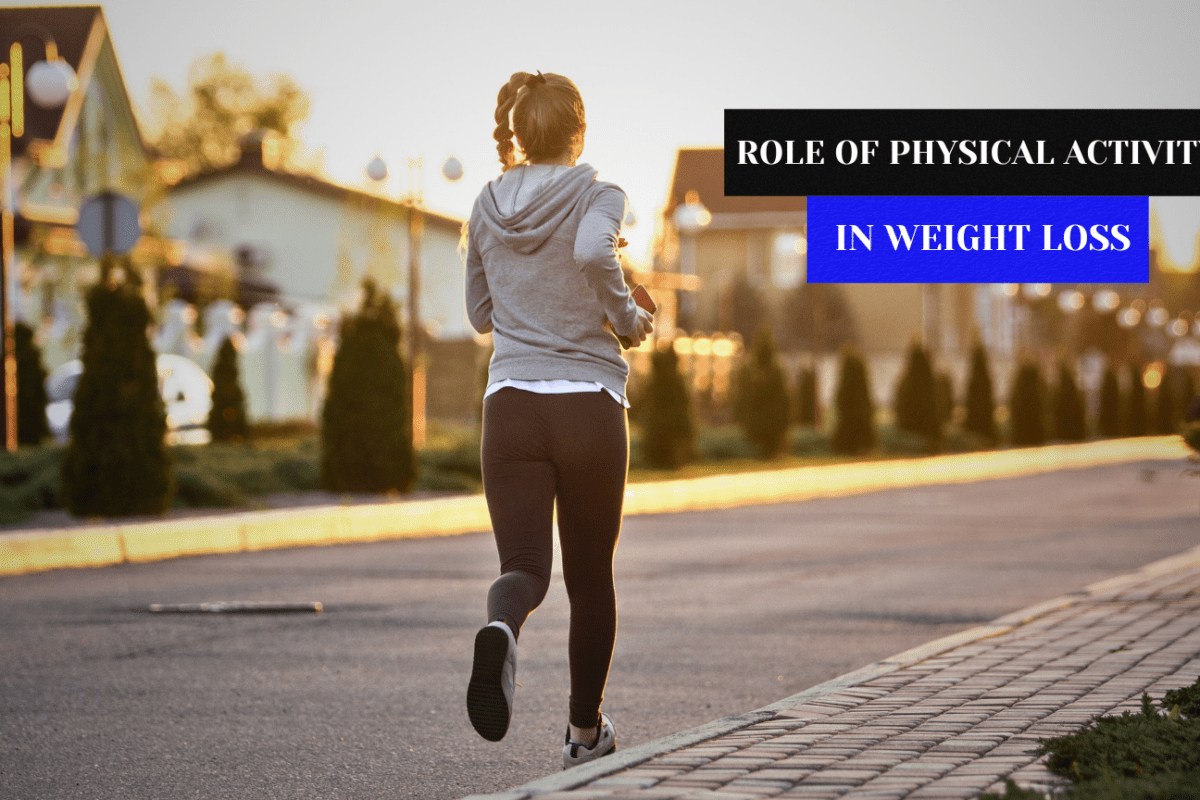Weight loss is a multifaceted journey that often requires a combination of diet, lifestyle changes, and physical activity. At Weight Loss Revolution, we understand that shedding those extra pounds can be a daunting task. While dieting is essential, physical activity plays a vital role in achieving and maintaining weight loss. In this article, we’ll explore the significance of physical activity in weight loss and provide tips to get you moving towards a healthier, happier you!

Calorie Burning
The most direct way physical activity contributes to weight loss is through calorie expenditure. When you engage in physical activities like walking, running, cycling, or swimming, your body burns calories. The more intense the activity, the more calories you burn. This helps create a calorie deficit, which is essential for weight loss. Weight Loss Revolution recommends a mix of aerobic exercises and strength training to maximise calorie burning and enhance metabolic rate.

Boosting Metabolism
Regular physical activity can significantly boost your metabolism, even when you’re at rest. This phenomenon is known as the “afterburn effect” or excess post-exercise oxygen consumption (EPOC). After engaging in high-intensity workouts, your body continues to burn calories at an elevated rate. At Weight Loss Revolution, we encourage incorporating high-intensity interval training (HIIT) into your exercise regimen to take full advantage of EPOC.
Preserving Lean Muscle Mass
When you lose weight, it’s important to ensure that you are primarily losing fat rather than muscle. Physical activity, especially strength training, helps preserve lean muscle mass. Muscle tissue is metabolically active and burns more calories than fat tissue, even at rest. By maintaining muscle mass, you can prevent a significant drop in metabolic rate, which often accompanies weight loss. Weight Loss Revolution offers personalised strength training programs to help you retain and build muscle while losing fat.

Improving Insulin Sensitivity
Physical activity enhances insulin sensitivity, which means your cells are better able to use available blood sugar for energy. This not only helps in managing weight but also reduces the risk of type 2 diabetes. Regular exercise, combined with a balanced diet, can improve your body’s ability to regulate blood sugar levels effectively. Weight Loss Revolution’s holistic approach includes dietary guidance alongside personalised fitness plans to optimise insulin sensitivity and overall health.
Enhancing Mood and Motivation
Exercise is known to release endorphins , the body’s natural feel-good chemicals. These endorphins can improve your mood, reduce stress, and increase motivation, making it easier to stick to your weight loss goals. At Weight Loss Revolution, we recognize the psychological benefits of physical activity and encourage clients to find activities they enjoy. Whether it’s dancing, hiking, or playing a sport, finding joy in movement can make the weight loss journey more enjoyable and sustainable.

Tips to Get You Moving
1. Start Small: Begin with short, manageable sessions (20-30 minutes) and gradually increase duration and intensity.
2. Find Your Passion: Engage in activities you enjoy, such as walking, jogging, swimming, cycling, or group fitness classes.
3. Schedule It: Treat exercise as a non-negotiable part of your daily routine.
4. Incorporate Strength Training: Include resistance exercises to build muscle and boost metabolism.
5. Seek Support: Join a fitness community or find a workout buddy to keep you motivated.
At Weight Loss Revolution, we are committed to providing comprehensive support that integrates physical activity with nutritional guidance and lifestyle coaching. Together, we can revolutionise your approach to weight loss and help you achieve lasting success. For more information on how Weight Loss Revolution can help you on your weight loss journey, visit our website or contact us to schedule a consultation. Your revolution starts here!
Bibliography
- Physical activity. (2016, April 12). Obesity Prevention Source. https://www.hsph.harvard.edu/obesity-prevention-source/obesity-causes/physical-activity-and-obesity/#:~:text=Physical%20activity%20increases%20people’s%20total,the%20development%20of%20abdominal%20obesity.
- Cox, C. E. (2017). Role of physical activity for weight loss and weight maintenance. Diabetes Spectrum, 30(3), 157–160. https://doi.org/10.2337/ds17-0013
- Kerr, M. (2022, January 19). Exercise and weight loss. Healthline. https://www.healthline.com/health/exercise-and-weight-loss
- Balfour, J., & Boster, J. (2023, June 20). Physical activity and weight loss maintenance. StatPearls – NCBI Bookshelf. https://www.ncbi.nlm.nih.gov/books/NBK572051/
- Stronach, A. (n.d.). The role of exercise in weight management | Medicine in Motion. Medicine in Motion. https://www.medicineinmotion.com.au/the-role-of-exercise-in-weight-management/

